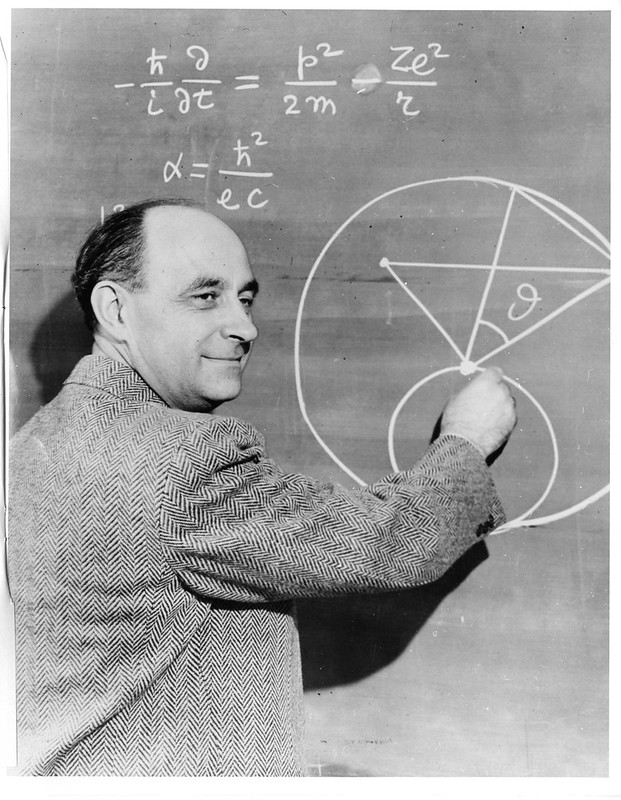SCHEMATIZING (13)
By:
August 20, 2023
One in a series of posts via which HILOBROW’S Josh Glenn will attempt to depict the intellectual and emotional highs and lows of developing a semiotic schema.

For whichever “semiosphere” we’re analyzing, ultimately we’re attempting to answer the question: Why is there something rather than nothing? A metaphysical question… but also a question for theoretical physicists.
Our universe is characterized by a physics that follows well-defined rules. For example, the only way bits of mass are pulled together or pushed apart is through a specific force. Physicists have identified four fundamental forces (or fundamental interactions) that govern how objects or particles interact and how certain particles decay. These fundamental interactions describe how matter behaves on the smallest subatomic scales and the largest cosmological scales.
The four forces are gravity, electromagnetism, weak interaction, and strong interaction; each of these can be described mathematically as a field. The gravitational force is attributed to the curvature of spacetime, described by Einstein’s general theory of relativity. The other three are discrete quantum fields, and their interactions are mediated by elementary particles. Electromagnetism (carried by the photon, and creating electric and magnetic fields, which are responsible for the attraction between orbital electrons and atomic nuclei which holds atoms together, as well as chemical bonding and electromagnetic waves, including visible light), weak interaction (carried by W and Z bosons, and acting on the nucleus of atoms, mediating radioactive decay), and strong interaction (carried by the gluon, and responsible for quarks binding together to form hadrons, such as protons and neutrons).
After Wolfgang Pauli postulated the existence of an uncharged invisible particle emitted along with an electron during beta decay (to satisfy the law of conservation of energy), in 1934 Enrico Fermi developed a model that incorporated the postulated particle, which he named the “neutrino.” Due to the very small mass of the neutrino (not zero, but much smaller than all other particles), it does not participate in strong interaction; thus, neutrinos — created by various radioactive decays — typically pass through normal matter unimpeded and undetected.
His theory, later referred to as Fermi’s interaction, is now called weak interaction — one of the four fundamental interactions in nature. The weak nuclear force, or weak force for short, is so named because it is the direct contrast to the strong nuclear force, i.e., the attractive force that binds protons and neutrons to form the nucleus of atoms. (And it’s only weak in contrast to the strong nuclear force; inside the atom, the weak force is a trillion-trillion-trillion times stronger than gravity.) While the three other fundamental forces hold things together, the weak force plays a role in things falling apart, or decaying. In other words: Why there is nothing, rather than something.
PS: Like many nuclear physicists of the time, Fermi contributed to the development of the atomic bomb, but he was also a strong proponent of the use of nuclear power for peaceful purposes.
MORE FURSHLUGGINER THEORIES BY JOSH GLENN: SCHEMATIZING | IN CAHOOTS | JOSH’S MIDJOURNEY | POPSZTÁR SAMIZDAT | VIRUS VIGILANTE | TAKING THE MICKEY | WE ARE IRON MAN | AND WE LIVED BENEATH THE WAVES | IS IT A CHAMBER POT? | I’D LIKE TO FORCE THE WORLD TO SING | THE ARGONAUT FOLLY | THE PERFECT FLANEUR | THE TWENTIETH DAY OF JANUARY | THE REAL THING | THE YHWH VIRUS | THE SWEETEST HANGOVER | THE ORIGINAL STOOGE | BACK TO UTOPIA | FAKE AUTHENTICITY | CAMP, KITSCH & CHEESE | THE UNCLE HYPOTHESIS | MEET THE SEMIONAUTS | THE ABDUCTIVE METHOD | ORIGIN OF THE POGO | THE BLACK IRON PRISON | BLUE KRISHMA | BIG MAL LIVES | SCHMOOZITSU | YOU DOWN WITH VCP? | CALVIN PEEING MEME | DANIEL CLOWES: AGAINST GROOVY | DEBATING IN A VACUUM | PLUPERFECT PDA | SHOCKING BLOCKING.
